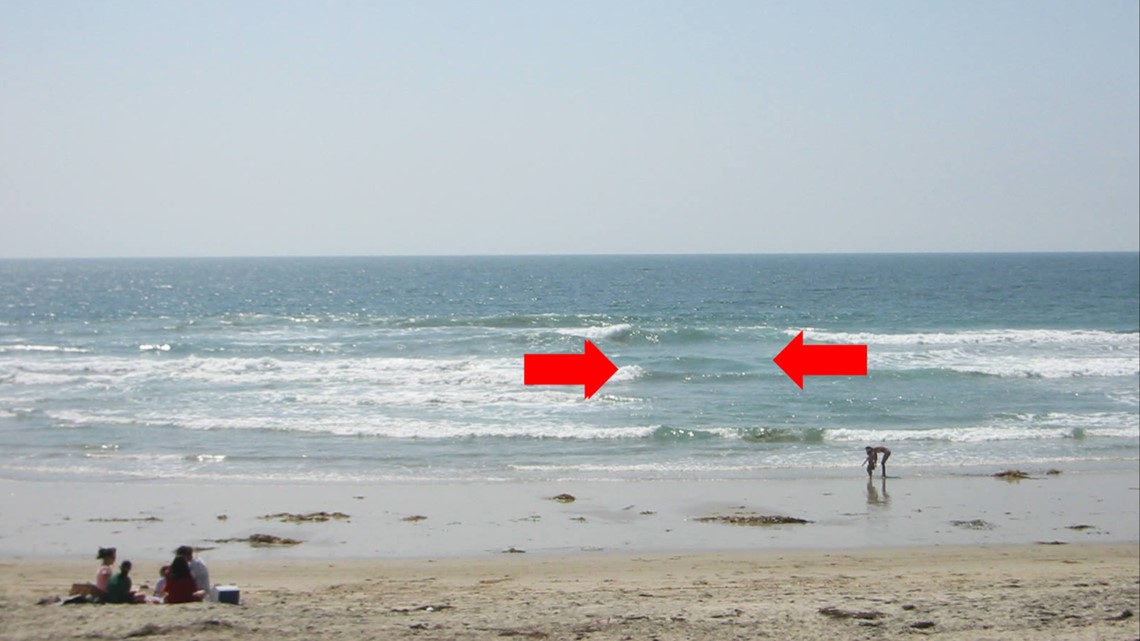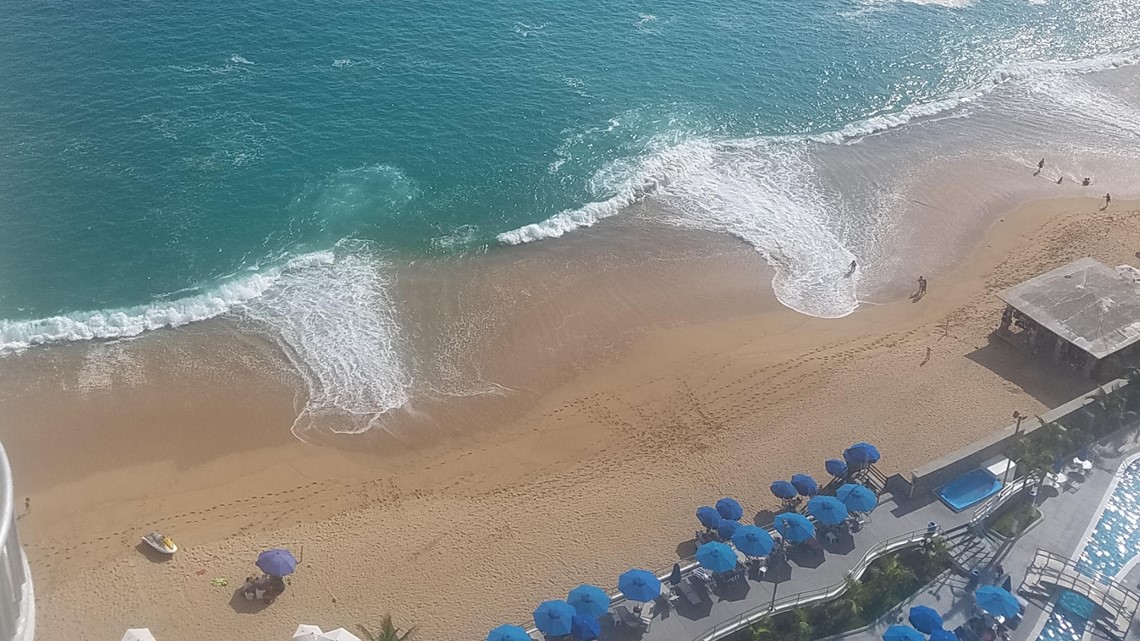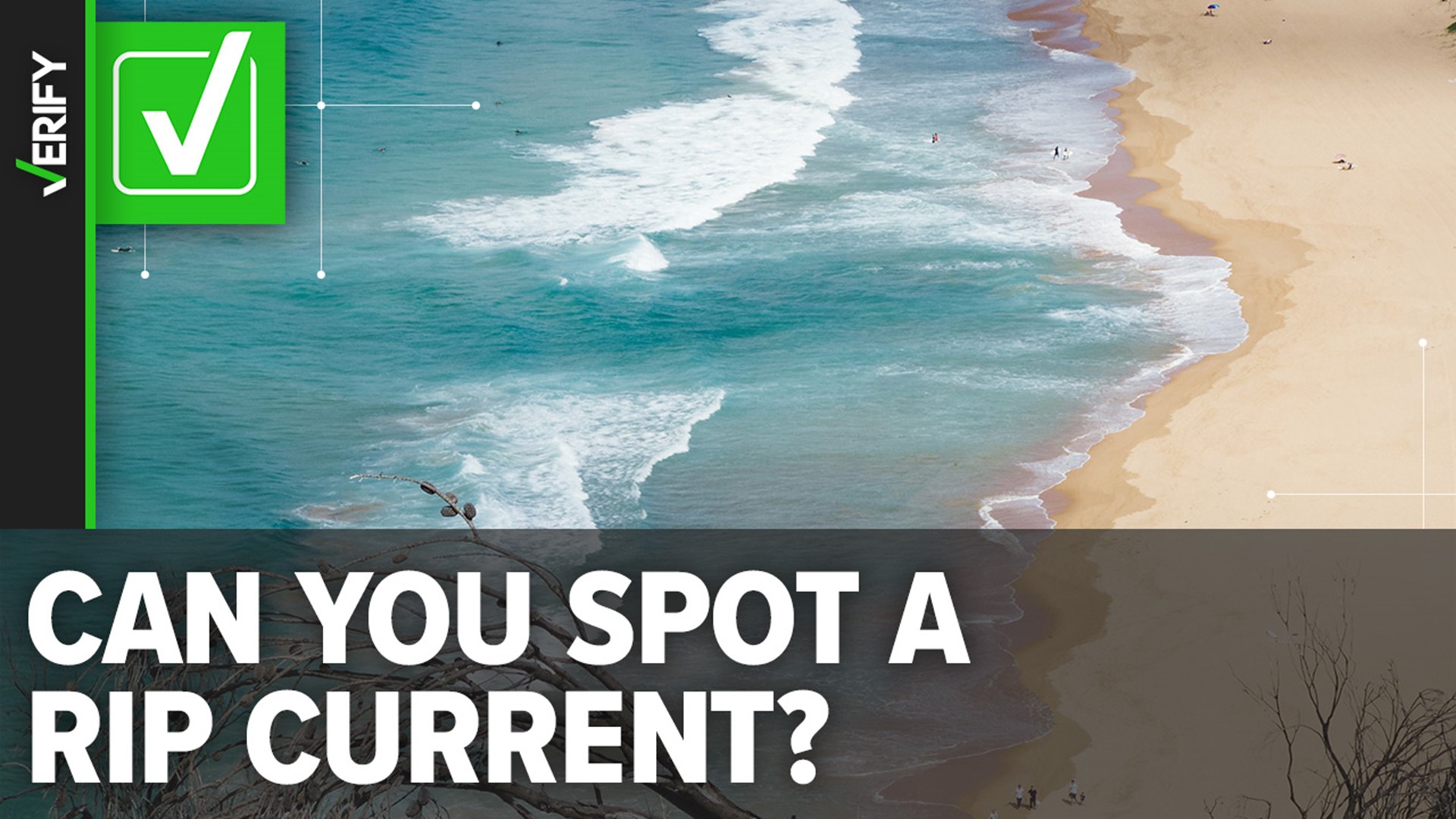The Gulf of Mexico's white sandy beaches are a big draw for tourists, but local officials in Florida are warning beachgoers to take extra precautions this summer because of dangerous rip currents.
Rip currents are powerful, narrow channels of fast-moving water prevalent at beaches along the East, Gulf and West coasts, as well as the shores of the Great Lakes. In June, more than 10 people died in rip currents at beaches stretching across Florida's Panhandle to Mobile, Alabama.
On June 26, a viral Facebook post claimed that it’s possible to spot a rip current when you’re at the beach. Recent online searches show that many people are wondering if that’s true.
THE QUESTION
Can you spot a rip current?
THE SOURCES
- National Weather Service (NWS)
- National Oceanic and Atmospheric Administration (NOAA) SciJinks
- United States Lifesaving Association (USLA)
- Daytona Beach Fire Department
- Greg Dusek, Ph.D., senior scientist with the National Ocean Service
- Tom Gill, vice president of the United States Lifesaving Association (USLA)
THE ANSWER
Yes, you can spot a rip current.
WHAT WE FOUND
Spotting a rip current is possible when you’re at the beach, according to the National Weather Service (NWS), the United States Lifesaving Association and the Daytona Beach Fire Department. Knowing what rip currents are and how to safely escape them before entering the water is extremely important.
“Yes, you can spot a rip current. But, it's very difficult to see if you are very close to the water,” Greg Dusek, Ph.D., a senior scientist with the National Ocean Service, told VERIFY.
“It's best to be at an elevated position, away from the water's edge, like a beach access. Then you want to scan the water's surface for a few minutes, as visual features that might indicate the presence of a rip current can come and go,” Dusek said.
Rip currents are found on almost any beach with breaking waves and act as “rivers of the sea,” moving sand, marine organisms and other material offshore, according to the NWS. They typically form at breaks in sandbars and near structures, such as jetties and piers, as well as cliffs that jut into the water.


To determine whether a rip current may be present when you’re at the beach, Dusek and the United States Lifesaving Association (USLA) both say you should look for the following signs:
- A narrow gap of darker, seemingly calmer water between areas of breaking waves and whitewater.
- A channel of churning, choppy water.
- A difference in water color.
- A line of foam, seaweed or debris moving away from shore.
“Look for flat spots in the lines of breaking waves, as rips often occur in deeper parts of the surf zone where waves aren't breaking. You might also see foam or sediment in the water being pulled out away from shore,” Dusek said.
The NWS says you can also spot a rip current by wearing polarized sunglasses to help identify contrasting colors in the water. Deep rip current channels, for example, stand out as darker water. You can also ask a lifeguard on duty if there are any rip currents and to point them out for you.
The Daytona Beach Fire Department says most rip current deaths occur when people caught in the current try to swim toward the shore against the current, which can cause them to become totally exhausted and drown. Often, would-be rescuers also get caught in the current and drown.
If you are caught in a rip current, the NWS says you should try your best to relax and avoid panicking because rip currents do not pull people underwater. After you relax, you should swim parallel to the shoreline until you escape the current's pull instead of swimming directly to the shore. When you’re free from the pull of the current, then you can swim at an angle away from the current toward the shore.
The NWS also shares other tips on how to survive a rip current on its website, including the following:
- If you feel you can't reach shore, relax, face the shore, and call or wave for help.
- Remember: If in doubt, don't go out!
- If at all possible, only swim at beaches with lifeguards.
- If you choose to swim on beaches without a lifeguard, never swim alone.


The Associated Press and VERIFY partner station WTSP-TV contributed to this report.

